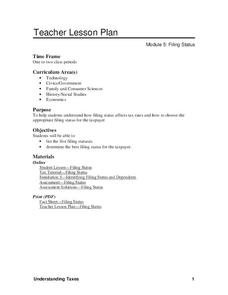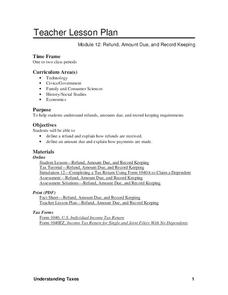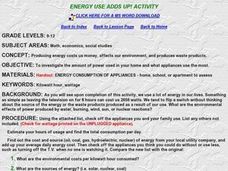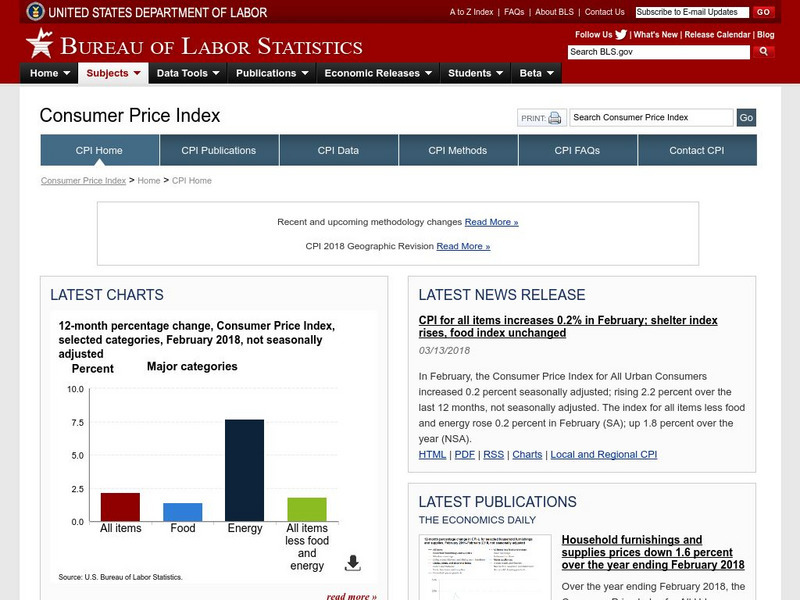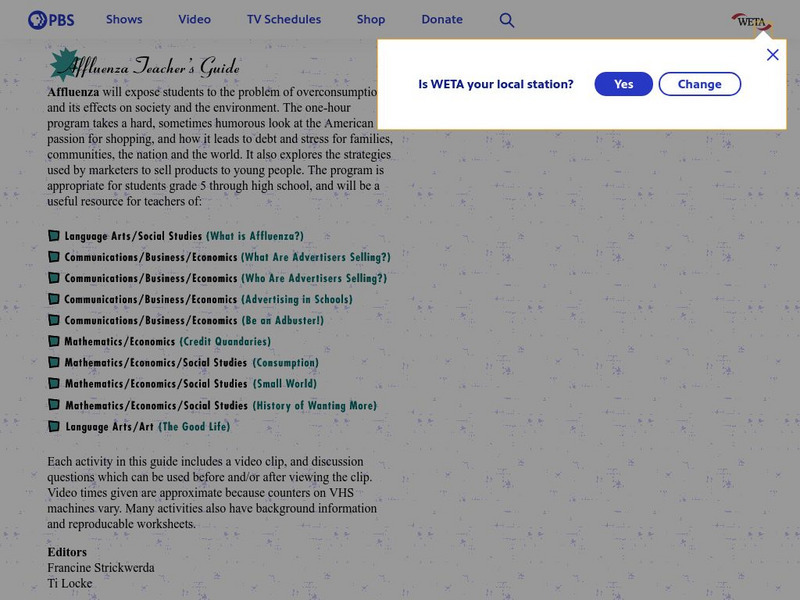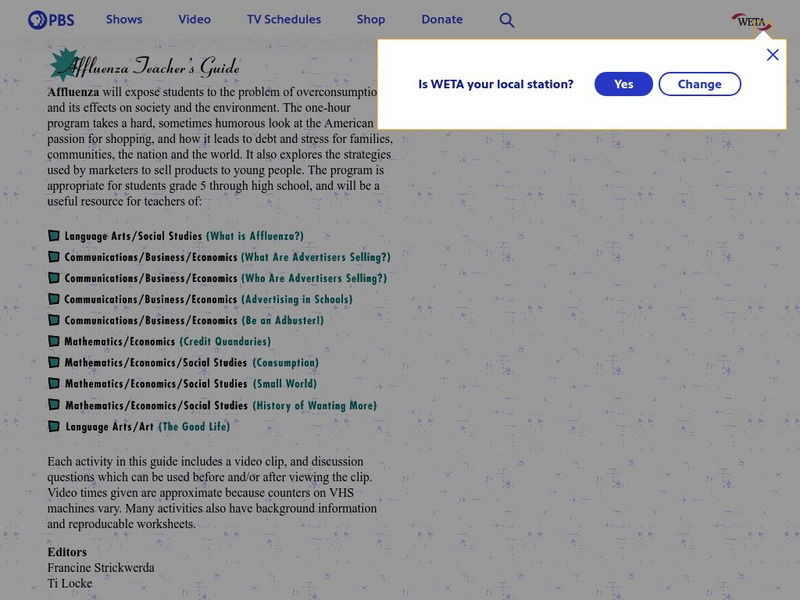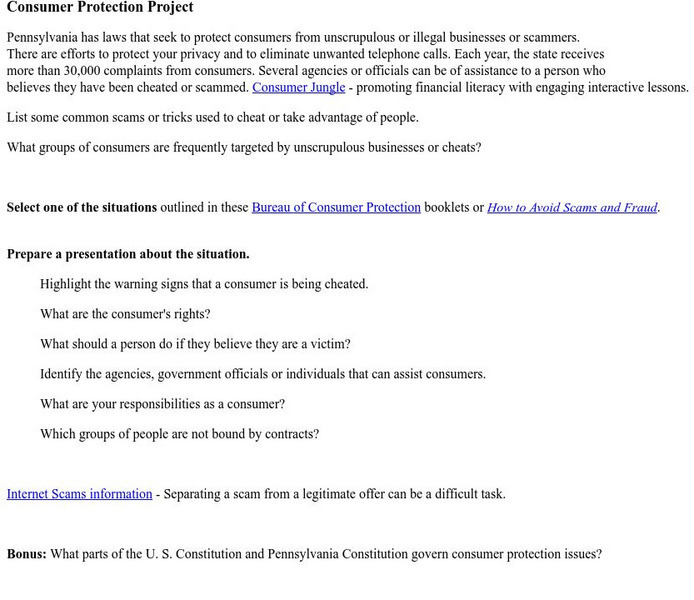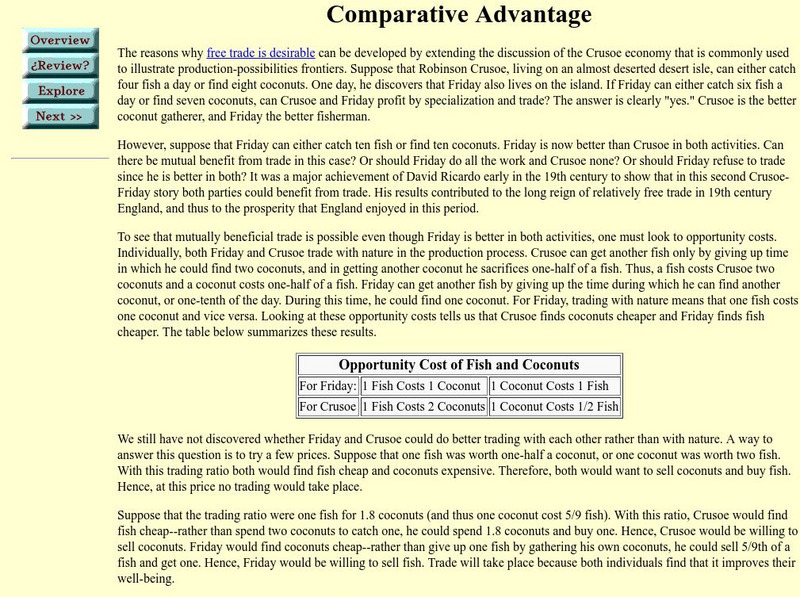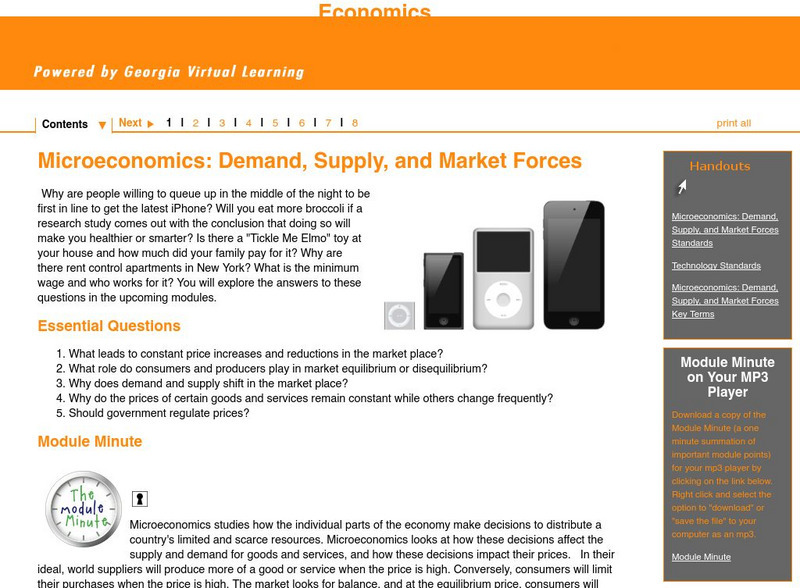Curated OER
Coal and The Kentucky Economy
High schoolers read about and study what an economy is. Students then answer questions that require them to define what an economy is and list the components of a healthy economy. High schoolers also list two ways that coal helps the...
Curated OER
Filing Status
Students examine then discuss the rate at which income is taxed and the five filing statuses. They complete online simulation worksheets then they answer a list of questions.
Curated OER
Module 10-Refund, Amount Due, and Record Keeping
Students explore to comprehend refunds, amounts due, and record keeping requirements. They define a refund and explain how refunds are received. Students define an amount due and explain how payments are made.
Curated OER
Module 13-Claiming Child Tax Credit
Students examine the difference between a refundable tax credit and a nonrefundable tax credit. They explain how the nonrefundable child tax credit affects the tax liability. They apply the requirements to claim the child tax credit and...
Curated OER
ENERGY USE ADDS UP!
Students investigate the amount of power used in your home and what appliances use the most. They analyze the concept that producing energy costs us money, affects our environment and produces waste products. Students come up with three...
Curated OER
Food Travels and Preservation
Fourth graders study food processing and distribution. For this food processing lesson, 4th graders investigate various methods of food preservation. Students study methods of food distribution.
Cornell University
Cornell University: Hearth/home Economics Education
Housed at the Mann Library, this resource contains a comprehensive set of books and journals in the field of Home Economics, many available online. Each subject area in the field has a descriptive essay plus a bibliography related to...
US Department of Labor
Bureau of Labor Statistics: Consumer Price Index
This resource provides comprehensive information with topic areas covering statistics, news releases, FAQs, official government publications and more information pertaining to the consumer price index.
Other
Usa.gov: Consumer Guides and Protection
This page provides news and information to educate consumers. Covers a wide variety of topics of concern to consumers.
Federal Trade Commission
Federal Trade Commission: Consumer Information
The Federal Trade Commission has developed helpful investment articles and videos to assist consumers in making educated decisions about how they spend, manage and invest their money.
Council for Economic Education
Econ Ed Link: Focus on Economic Data: The Inflation Rate
Explore the inflation rate from 2013 through this informative case study. Trace the consumer trends through the graphs and charts on the site.
Council for Economic Education
Econ Ed Link: How E Commerce Influences Consumer Choice
In this instructional activity students learn decision making skills that will help them become better consumers. As consumers they have a variety of alternatives from which to choose. They learn about the importance of price information...
Council for Economic Education
Econ Ed Link: What Does the Nation Consume?
This lesson will focus on what the nation consumes and how that is measured by Gross Domestic Product (GDP). In the United States, the goods and services produced for household consumption account for about two-thirds of total output.
Council for Economic Education
Econ Ed Link: Forecasting Economics
Can you learn economics from the weather? Students will be able to integrate science, math, and economics through this engaging lesson. The forecast predicts some percentage chance of success.
Council for Economic Education
Econ Ed Link: If I Ran the Zoo Economics and Literature
Welcome to the Zoo! In this two-day instructional activity you will use Dr. Seuss' If I Ran The Zoo book to introduce the economic concepts to your students. You will also get the chance to use actual zoo criteria to help a zoo "choose"...
PBS
Pbs Lesson Plan: What the World Consumes
These visual, easy-to-grasp lessons in world economics and consumerism features lessons and related videos in which students experience first-hand the economic dilemmas faced by other countries and are asked to examine their own values...
PBS
Pbs Lesson Plan: What the World Consumes
These visual, easy-to-grasp lessons in world economics and consumerism features lessons and related videos in which students experience first-hand the economic dilemmas faced by other countries and are asked to examine their own values...
Utah Education Network
Uen: Producing and Consuming
Lesson that helps students understand the difference between producers and consumers. Students create booklets, making them producers, and then use the booklets to complete the lesson, making them consumers.
Alabama Learning Exchange
Alex: Producers and Consumers
This instructional activity will teach the difference between producers and consumers. It provides an interactive way for young scholars to get involved and actually become producers and consumers.
Cynthia J. O'Hora
Mrs. O's House: Consumer Protection Project
The media fills us in on the most recent scams around town and the nation. Taking part in this project will educated students on the scams that are out there and question the rights consumers have and the role governments should take in...
US Department of Labor
Bureau of Labor Statistics: Consumer Price Index
Extensive information about the Consumer Price Index. Constantly updated.
Robert Schenk, PhD
Cyber Economics: Comparative Advantage
Article with charts and links to related material discusses how free trade is a result of comparative advantage, and how consumers can consume beyond their original production possibilities frontier if they specialize and trade.
Georgia Department of Education
Ga Virtual Learning: Economics: Microeconomics: Demand, Supply and Market Forces
Economics learning module with interactive assignments, projects and assessment discusses the interplay of demand, supply and market forces.
Rice University
Principles of Economics: Regulating Natural Monopolies
This section from an Economics textbook explains why natural monopolies are allowed and how those monopolies can be regulated, usually by government, so that both companies and consumers are dealt with fairly.

